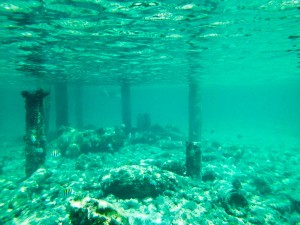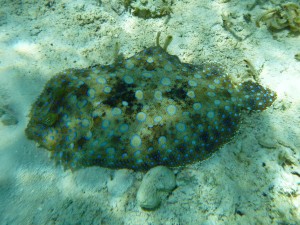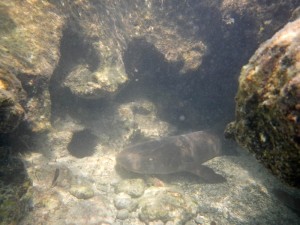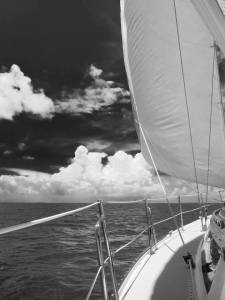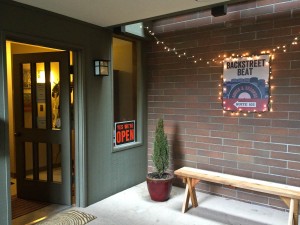It wasn’t until I was 35 feet below the surface that I realized I had only ever been a tourist. I love the ocean. I truly love being enveloped by the water. One of my favorite sensations is to be part of a school of fish. I love when they are as curious about me as I am of them. Or at least not afraid of me. I hate when they dart away in fear. Some days, all I want to do is glide among them in that tranquil place as waves rock my body.
About 10 years ago, I tried scuba diving. A friend’s brother provided a free lesson in her pool. Scuba isn’t cheap, which had long been a barrier. The breathing and buoyancy parts came easy, but I couldn’t get my ears to equalize. Neither could WPT. I assumed I wouldn’t be able to go deeper than the 8-10 feet I managed freediving while snorkeling. WPT had trouble doing even that. I spent the next decade bobbing along on the surface of the water, my need for oxygen and assumptions about my ears keeping me from going any deeper.
WPT and I arrived on Grand Cayman with only the loosest of agendas. We didn’t think we’d make it there, so why plan or make reservations when we expected a last minute cancellation? At the motel, we looked at brochures and I spotted a “discover scuba” course for $105 a person. If we were ever going to try to scuba, Grand Cayman seemed to be the place to do it. At worst, our ears would be in too much pain, but at least we would know for sure and only be out $200 bucks (other similar options were often $200 a person).



We arrived at Divers Down in the capital of George Town early the next morning and met our instructor, Alex. Safety instructions in a French accent are somehow more reassuring. She taught us basic dive sign language and we were in the water within minutes. We tried out the rebreathers and she worked on getting us weighted for neutral buoyancy. We were soon standing on the ocean floor. She guided us around the Wreck of the Cali, a cargo ship that had the misfortune of springing a leak while carrying a load of rice. It was sunk in the George Town harbor some 80 years ago and now provides an excellent scuba spot. Alex led us around the wreck and a small patch reef.



With Alex’s calm guidance, we each learned to equalize our ears. We soon began to use our breathing to control our accent and decent. She kept close watch over us and helped when we needed it. It wasn’t nearly enough time.

Back on dry land, Alex said we were naturals and that we were better than a lot of the certified divers that visit the island. She remarked at how comfortable we were and had good natural buoyancy. I asked about other dive options and she said she would approve us for a supervised boat dive, up to about 35 feet deep.
We arrived far too early the next afternoon. We went and hung out with chickens across the street until it was time to go out. We had asked that Alex be our instructor again.

There are rules underwater that apply to everyday life. It is easy to panic and want go to the surface. It is dangerous to react that way. Stop and think before you react. You need to control your breathing or you will lose your balance, or worse. When you start to become too buoyant, the answer is as easy as breathing. In. Out. In. Out. Calm. The. Fuck. Down. She taught us the sign for that, and it works on land, too. Pay attention all around you, not just what is in front of you. Keep an eye on one another.

She took us 35 feet down. Then 40. And, later, 50. I was ecstatic. She later told us we were so natural in the water that she knew we would be fine. At some point, as we came through a cut in the rock formation and I looked up and saw fish swimming above me. I felt a level of being at peace and, oddly, at home. It was then I realized that, as a snorkeler, I had only ever been a tourist, but as a diver, I felt like a local. I felt like I belonged there.






















